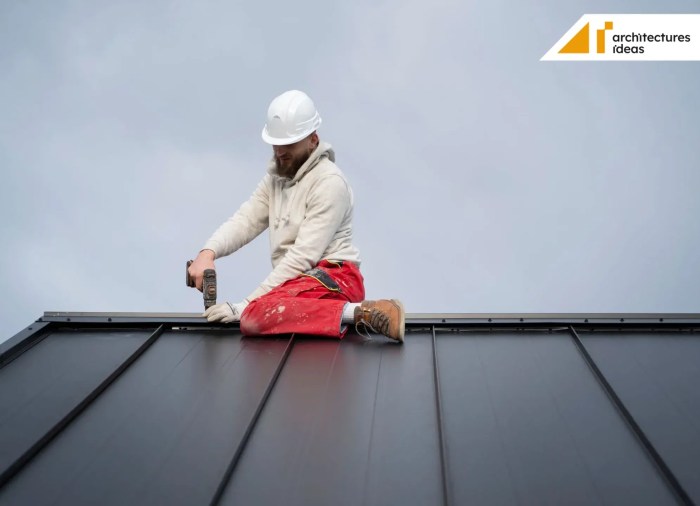Embark on a journey through the realm of International Standards for Roofing and Exterior Projects, delving into the significance and intricacies that shape construction practices worldwide.
Unveil the diverse landscape of standards, materials, and certifications that underpin quality, safety, and durability in construction projects.
 Adhering to international standards in roofing and exterior projects is essential to ensure quality, safety, and durability in construction projects. These standards provide guidelines and best practices that help in achieving uniformity and consistency in the construction industry.
Adhering to international standards in roofing and exterior projects is essential to ensure quality, safety, and durability in construction projects. These standards provide guidelines and best practices that help in achieving uniformity and consistency in the construction industry.
 Compliance with international standards for roofing and exterior projects is crucial for ensuring quality, safety, and sustainability in construction practices. Companies need to follow a specific process to demonstrate their adherence to these standards and obtain certification.Certifications play a vital role in verifying that a company's products or services meet the requirements set by international standards organizations.
They serve as proof that the company has implemented the necessary processes, procedures, and quality controls to deliver products or services that meet the specified criteria
.
Compliance with international standards for roofing and exterior projects is crucial for ensuring quality, safety, and sustainability in construction practices. Companies need to follow a specific process to demonstrate their adherence to these standards and obtain certification.Certifications play a vital role in verifying that a company's products or services meet the requirements set by international standards organizations.
They serve as proof that the company has implemented the necessary processes, procedures, and quality controls to deliver products or services that meet the specified criteria
.
Overview of International Standards for Roofing and Exterior Projects
 Adhering to international standards in roofing and exterior projects is essential to ensure quality, safety, and durability in construction projects. These standards provide guidelines and best practices that help in achieving uniformity and consistency in the construction industry.
Adhering to international standards in roofing and exterior projects is essential to ensure quality, safety, and durability in construction projects. These standards provide guidelines and best practices that help in achieving uniformity and consistency in the construction industry.
Key Organizations Setting Standards
- The International Code Council (ICC): Develops the International Building Code (IBC) which includes regulations for roofing and exterior projects.
- American Society for Testing and Materials (ASTM): Establishes standards for materials used in construction, including roofing materials.
- European Committee for Standardization (CEN): Sets standards for construction in European countries, including roofing and exterior projects.
Importance of International Standards
International standards ensure that construction projects meet specific criteria for quality, safety, and performance. By following these standards, contractors and builders can guarantee that their projects are built to last and withstand environmental factors.Types of International Standards for Roofing and Exterior Projects
International standards for roofing and exterior projects encompass a wide range of guidelines and requirements to ensure the safety, quality, and durability of structures. These standards play a crucial role in harmonizing practices and promoting best practices across different regions and countries.Standards for Roofing Projects
Roofing standards cover various aspects of roofing materials, installation, and design to ensure the structural integrity and longevity of roofs. Some specific standards include:- ASTM D3462/D3462M - Standard Specification for Asphalt Shingles Made from Glass Felt and Surfaced with Mineral Granules
- EN 1991-1-4 - Eurocode 1: Actions on structures - Part 1-4: General actions - Wind actions
Standards for Exterior Projects
Exterior project standards focus on materials, installation techniques, and design considerations for exterior elements of buildings, such as walls, windows, and facades. Examples of specific standards include:- ISO 12944-5:2018 - Paints and varnishes - Corrosion protection of steel structures by protective paint systems - Part 5: Protective paint systems
- ANSI/AAMA 2605-17 - Voluntary Specification, Performance Requirements and Test Procedures for Superior Performing Organic Coatings on Aluminum Extrusions and Panels
Variations Across Regions
While many international standards are globally recognized and adopted, there can be variations in specific requirements and regulations based on regional factors such as climate, building practices, and environmental considerations. For example, roofing standards in regions prone to high winds may have stricter wind resistance requirements compared to regions with milder climates.Compliance and Certification Processes
 Compliance with international standards for roofing and exterior projects is crucial for ensuring quality, safety, and sustainability in construction practices. Companies need to follow a specific process to demonstrate their adherence to these standards and obtain certification.Certifications play a vital role in verifying that a company's products or services meet the requirements set by international standards organizations.
They serve as proof that the company has implemented the necessary processes, procedures, and quality controls to deliver products or services that meet the specified criteria
Compliance with international standards for roofing and exterior projects is crucial for ensuring quality, safety, and sustainability in construction practices. Companies need to follow a specific process to demonstrate their adherence to these standards and obtain certification.Certifications play a vital role in verifying that a company's products or services meet the requirements set by international standards organizations.
They serve as proof that the company has implemented the necessary processes, procedures, and quality controls to deliver products or services that meet the specified criteriaProcess for Compliance with International Standards
- Companies first need to identify the relevant international standards applicable to their roofing and exterior projects.
- They then need to assess their current practices and processes against these standards to identify any gaps or areas that need improvement.
- Companies should implement the necessary changes to align their operations with the international standards requirements.
- Regular audits and assessments are conducted to ensure ongoing compliance with the standards.
Role of Certifications in Demonstrating Compliance
- Certifications provide independent verification that a company's products or services meet the international standards' requirements.
- They enhance the company's credibility and reputation in the industry, demonstrating a commitment to quality and excellence.
- Certifications can also help companies gain a competitive edge by differentiating themselves in the market as compliant with recognized industry standards.
Benefits of Being Certified to International Standards
- Improved quality and safety of products and services, leading to customer satisfaction and trust.
- Access to new markets and opportunities where certification to international standards is a requirement.
- Enhanced efficiency and productivity through standardized processes and best practices.
- Reduced risks of errors, rework, and non-compliance, resulting in cost savings and improved performance.







